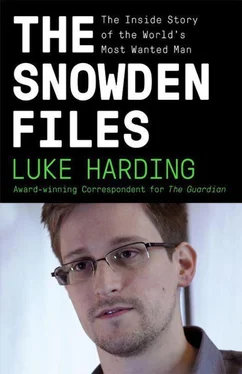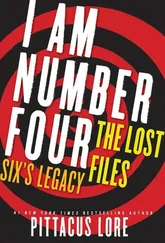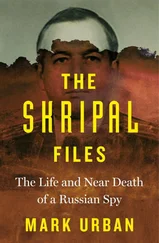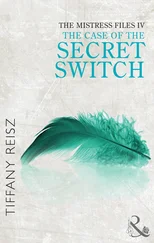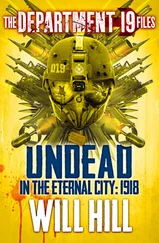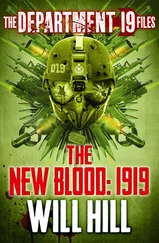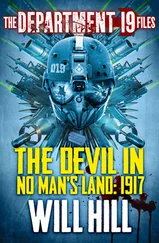For Janine Gibson, formerly the online editor of guardian.co.uk, the paper’s website, this would certainly be a white-knuckle ride. Could a mistake blow everything? There were multiple problems. ‘Nobody had ever seen these documents before. The FISA court documents were so secret there was nothing to compare them with,’ she says. She was wondering uneasily whether the text of the court order was too good to be true – a possible hoax.
One of the biggest problems was the US Espionage Act. The US regulatory regime was looser than its British counterpart. Back at the Guardian ’s UK base, the British government could simply go for a court injunction – a gag order to stop publication. But even in the US, home of the first amendment, the potential ramifications of publishing super-sensitive classified NSA material were grave. This was the biggest intelligence leak ever.
It seemed highly possible that the US government might seek a subpoena. And assemble a grand jury. The aim would be to force the Guardian to disclose the identity of its source. Millar and Gibson met with two leading media lawyers – initially David Korzenick and later David Schulz. The pair helped sketch a way forward.
The Espionage Act was a curious piece of legislation written during the first world war. It made it a crime to ‘furnish, transmit or communicate’ US intelligence material to a foreign government. The statute was rather vague. It was unclear, for example, whether the law did or didn’t apply to journalists who might publish national security items. Case law wasn’t much help, either: there were very few precedents for a prosecution of this kind.
There were some grounds for optimism. First, during its 96 years, the Espionage Act had never been used against a news organisation. It seemed unlikely this administration would want to be the first. Second, the political context was propitious. The White House had found itself at the centre of a firestorm over what critics said was its repeated persecution of investigative journalists. The Justice Department had obtained telephone records from reporters working for the Associated Press, who had written about a failed al-Qaida plot – an astonishing intrusion into a news-gathering operation. In another leaked inquiry it had targeted a reporter from Fox News. Following an outcry, attorney general Eric Holder told Congress his department would not prosecute journalists for engaging in journalism.
Nonetheless, it was important for the Guardian to demonstrate that it was behaving responsibly. The paper had to show it was taking every reasonable step to avoid hurting US national security. And that it published only material which revealed the broad outlines of the government’s surveillance policies, rather than damaging operational details. The test was: does the public have a genuine right to know under the first amendment? The paper’s sole aim was to enable the debate that Snowden and persistent critics in the Senate such as Wyden, and his Senate intelligence committee colleague Mark Udall, had long wanted.
Events were moving at speed. The Guardian ’s MacAskill had tapped out a four-word text from Hong Kong. It said: ‘The Guinness is good.’ This code phrase meant that he was now convinced Snowden was genuine. Gibson decided to give the NSA a four-hour window to comment, so the agency had an opportunity to disavow it. By British standards the deadline was fair – long enough to make a few calls, agree a line. But viewed from Washington, where journalist–administration relations were cosy and sometimes resembled a country club, this was nothing short of outrageous even considering briefing spokesmen on complicated material.
In DC on Wednesday, Ackerman’s official first day began in the Washington office. He said hello to his new colleague Dan Roberts, the Guardian ’s Washington bureau chief, but could disclose nothing of his surreal mission. At around 1pm he put a call in to Verizon. He then rang the White House’s Caitlin Hayden. Hayden was chief spokesperson for the National Security Council (NSC), the powerful body in charge of co-ordinating US national security and foreign policy strategy, chaired by the president. Hayden didn’t pick up.
Ackerman sent an urgent email. It had the subject: ‘need to talk ASAP’:
‘Hi Caitlin,
Just left you a voicemail – on what I *hope* was your voicemail extension. I’m now with the Guardian , and I need to speak with you urgently concerning a story about US surveillance activities. I think it’s best we speak by phone… Please do call as soon as you can.’
Hayden was busy. It was, coincidentally, the day the White House announced Ambassador Susan Rice would become Obama’s national security adviser, director of the National Security Council. Hayden emailed to say she would come back to him in an hour. Mid-afternoon, she did call. Ackerman told her what the Guardian had – a secret FISA court document – and what it intended to do – publish it, the same day, at 4.30pm. ‘Caitlin was extremely upset,’ Ackerman says.
After her initial shock, Hayden professionally noted down the details. She promised to ‘take this to her people’. Those people’s mood must have been one of confusion – what precisely was the Guardian and where the hell had these pesky Brits got the leak from?
At 4pm, Hayden emailed and said the White House would like him to speak ‘as soon as possible’ to the relevant agencies, the Department of Justice and the NSA. Ackerman called the DoJ and spoke to NSA press officer Judy Emmel. Emmel betrayed no reaction. ‘My heart was racing,’ Ackerman says.
At Gibson’s instruction, Ackerman now emailed Hayden to say his editor had authorised him to push the deadline back ‘until 5.15pm’.
Hayden then called Gibson herself, direct from the White House. She had a proposal – a 5.15pm conference call. The White House was sending in its top guns. The team included FBI deputy director Sean M Joyce, a Boston native with an action-man resumé – investigator against Columbian narcotics, counter-terrorism officer, legal attaché in Prague. Joyce was responsible for the FBI’s 75 overseas and domestic missions fighting crime and threats to national security. He was now the FBI’s lead on intelligence.
Also patched in was Chris Inglis, the NSA’s deputy director. Inglis was a man who interacted with journalists so rarely he was considered by many to be a mythical entity, like the unicorn. Inglis’s career was illustrious. He had degrees in mechanical engineering and computer science, and had climbed rapidly through the NSA. Before becoming General Alexander’s civilian number two, he was posted between 2003 and 2006 to London as senior US liaison officer (SUSLO), the US’s top-ranking intelligence official liaising with GCHQ and British intelligence. Presumably during his London stint he would have seen the Guardian .
Then there was Robert S Litt – known as Bob – the general counsel to the Office of the Director of National Intelligence. A Harvard and Yale graduate, Litt knew how the FISA court worked from his six years in the mid and late 1990s at the Department of Justice. Litt was clever, likeable, voluble, dramatic, lawyerly and prone to rhetorical flourishes. ‘He knows what he’s doing. Smart. The smartest of the bunch,’ in Ackerman’s judgement.
On the Guardian side were Gibson and Millar, two British journalists, sitting in Gibson’s small office, with its cheap sofa and unimpressive view of Broadway. Ackerman was routed in as well from DC. But it seemed poor odds – a couple of out-of-towners ranged against a Washington behemoth.
By fielding heavyweights, the White House had perhaps reckoned it could flatter – and if necessary bully – the Guardian into delaying publication of the Verizon story, certainly for a few days, and possibly forever. The strategy was a rational one. But it made a few presumptions. It assumed the White House was in control of the situation. And it perhaps underestimated Gibson. ‘It’s in these moments you see what your editors are made of,’ Ackerman observes.
Читать дальше
